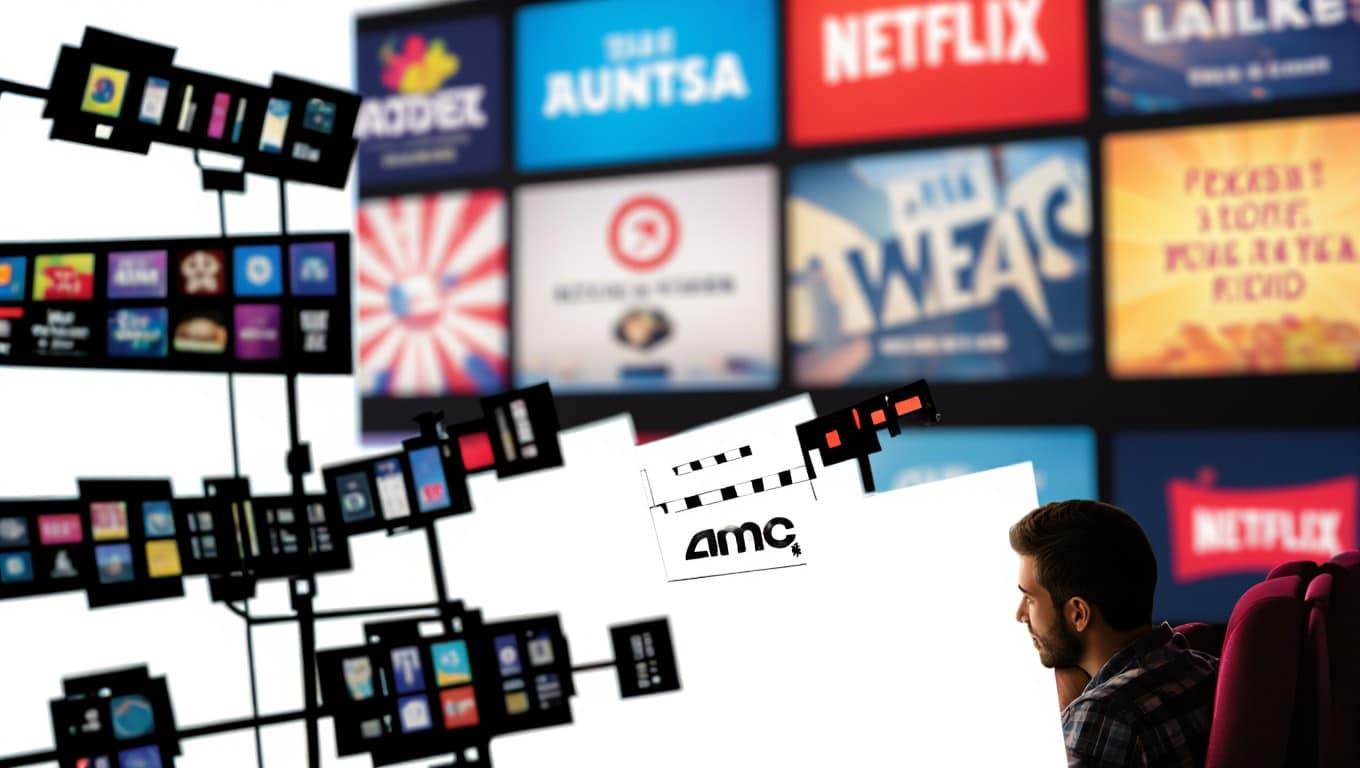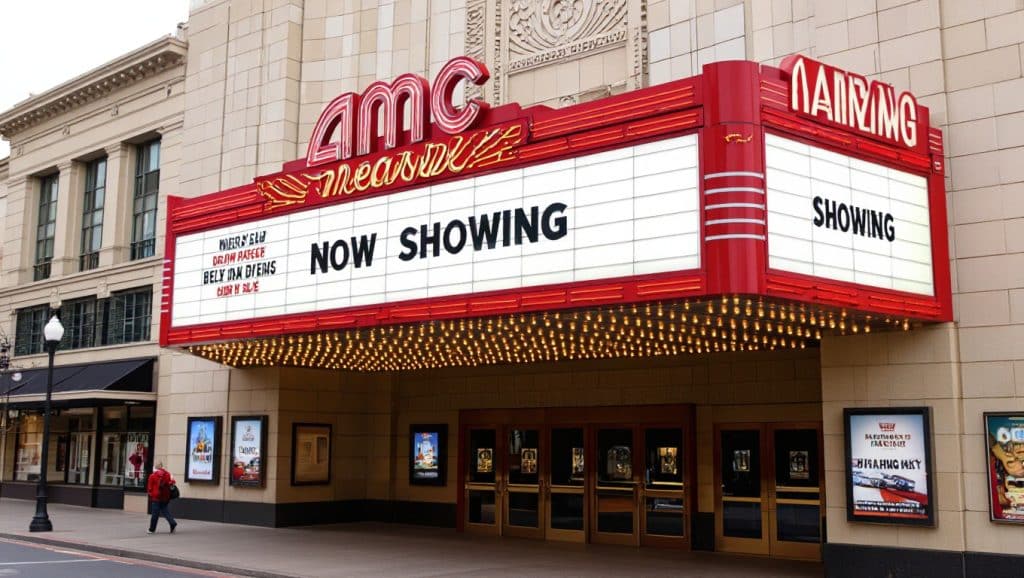Over recent years, you may have noticed changes in your moviegoing experience, and starting today, AMC Theaters will increase the amount of ads shown before films. This move comes as part of a new deal with National CineMedia, placing ads in the highly visible “platinum spot” right before movies start. While this means more advertising content during your visit, it also represents a strategic effort by AMC to stabilize ticket prices and support the company amid ongoing industry challenges like declining attendance and competition from streaming services.
AMC’s Strategic Shift: Embracing Ads
AMC’s decision to increase ad placements marks a significant strategic pivot from its previous stance, reflecting the urgency to stabilize revenue streams amid a challenging market. Facing the ripple effects of the pandemic, labor strikes, and streaming competition, the company now leans on advertising as a critical tool to balance costs without hiking ticket prices. This shift signals that AMC is prioritizing long-term sustainability by leveraging its vast theater footprint to attract advertisers and strengthen cash flow during a period when attendance remains fragile.
The New Partnership with National CineMedia
Teaming up with National CineMedia broadens AMC’s access to a network specializing in cinema advertising for major theater chains, enabling the exchange of more lucrative ad inventory. This partnership, activated nationwide starting Tuesday, means you’ll see a higher volume of targeted ads designed to maximize advertiser reach while helping AMC recover from its worst earnings quarter outside the pandemic period. The alliance brings both experience and scale, promising to enhance AMC’s bottom line as it embraces this revamped business model.
The “Platinum Spot” Explained: What Moviegoers Can Expect
The “platinum spot” refers to the premium advertising slot immediately before the movie starts, offering advertisers prime visibility to a captive audience—your audience. Ads here are part of a preshow that collectively lasts between 25 and 30 minutes, including movie trailers and promotional content. While the increase in ads may lengthen your wait before the feature film begins, AMC and National CineMedia expect this approach to stabilize ticket prices and support the company’s financial recovery without directly impacting theater attendance.
Delving deeper, the “platinum spot” is a coveted advertising window because it captures viewers’ full attention right before the main event. For you, this means that the ads will be more prominent and potentially more engaging, crafted to complement the preshow experience rather than disrupt it. With competitors having long integrated similar advertising packages successfully, AMC’s adoption aligns with industry trends, aiming to maintain a balance that keeps you coming back while providing studios and advertisers with valuable exposure.
The Financial Context: Analyzing AMC’s Current Position
AMC’s recent pivot to expanding in-theater advertising emerges against a backdrop of significant financial challenges. You might have noticed that ticket sales are still struggling to recapture pre-pandemic levels, with 2024 revenues down 3.3% year-over-year and nearly 24% below 2019 figures. The company’s push for additional ad revenue aims to stabilize the bottom line by offsetting these ongoing declines, helping to keep ticket prices from rising sharply while supporting efforts to adapt amid an evolving entertainment landscape.
Recent Earnings and Challenges Faced
The first quarter of 2024 marked AMC’s weakest earnings since 1996 outside the pandemic era, highlighting persistent pressure. CEO Adam Aron described these results as a temporary “anomaly” but acknowledged shuttering 169 theaters since 2019 to reduce costs. Despite the outlook improvement flagged during the latest investor call, you can see how thin margins remain. The company must now rely on innovative revenue streams like expanded advertising to navigate through this financial turbulence and sustain operations as recovery continues.
The Impact of Streaming and Industry Strikes
The rise of streaming services has steadily chipped away at traditional theater attendance, forcing AMC to rethink its strategies. Then, in 2023, actors’ and writers’ strikes disrupted film release schedules, creating additional hurdles for new content rolling out on the big screen. You experience this ripple effect firsthand at your local theater, where fewer blockbuster releases and staggered premieres translate into lower foot traffic and revenue challenges.

Historical Perspective: From Reluctance to Acceptance
The shift in AMC’s approach to pre-show advertising reveals how industry pressures and evolving consumer habits have forced a rethink. Initially cautious and resistant, AMC feared that longer ad times would alienate audiences. Yet, with competitors seeing no significant attendance drops despite increased ad loads, and ongoing challenges from streaming and strikes, AMC has embraced the move as a necessary strategy to bolster revenue and stabilize ticket pricing, signaling a pragmatic pivot amid uncertain recovery.
AMC’s Previous Stance on Pre-Show Advertising
Back in 2019, AMC flatly rejected National CineMedia’s offer to place ads in the coveted “platinum spot,” citing concerns that US moviegoers would react negatively to extended promos. This cautious stance contrasted sharply with industry peers, as AMC prioritized preserving the traditional theatergoing experience over additional advertising revenue, reflecting its focus on customer satisfaction despite mounting financial pressure.
Lessons from Competitors: Regal and Cinemark
Regal Cinemas and Cinemark embraced National CineMedia’s pre-show ad slots over five years ago without suffering attendance losses, demonstrating a tolerance among moviegoers for longer preshow content. This precedent demonstrated that incorporating ads could be a sustainable revenue stream rather than a deterrent, providing AMC with a proven model and justifying its eventual acceptance of similar deals.
Regal and Cinemark’s early adoption of expanded advertising sets a practical example. Despite fears, their box office attendance remained stable even as preshow times extended toward 25-30 minutes. Their experience shows that when ads are integrated thoughtfully, they don’t necessarily disrupt the moviegoing experience or drive customers away. For AMC, this provided both a risk benchmark and confidence to pursue additional ad sales as a revenue lifeline amid a sluggish post-pandemic recovery and competitive streaming pressures.
Future Implications: Will Ads Enhance or Detract from the Experience?
Adding more ads in AMC theaters places you directly at the crossroads of convenience and irritation. While increased ad time can help stabilize ticket prices and even improve amenities, it also risks testing your patience, especially as preshow durations stretch up to 30 minutes. The real question remains whether this tradeoff will enhance your overall moviegoing experience or breed frustration, as you balance anticipation for new releases against the growing presence of advertising content.
Audience Reception and Potential Backlash
You’re likely to notice mixed reactions from fellow moviegoers as AMC ramps up ad time. Early resistance back in 2019, when competitors adopted similar measures, hinted at customer unease — concerns AMC originally shared. Although competitors saw no direct attendance drops, you may experience annoyance or dissatisfaction if ads disrupt the immersive environment you expect at the theater. How AMC manages this balance will shape public perception going forward.
Financial Projections and Long-term Goals for AMC
AMC views the expanded advertising deal as a critical source of new revenue, aiming to offset losses caused by pandemic fallout and industry strikes. With 2024 ticket sales at $8.7 billion—down 23.5% since 2019—and a slowly recovering box office, AMC expects these additional ad sales to fund price stability and theater improvements, supporting a healthier financial future. CEO Adam Aron sees this strategy as pivotal for long-term survival amid streaming competition.
Digging deeper, AMC’s partnership with National CineMedia expands ad inventory into the “platinum spot,” maximizing revenue from a captive audience just before feature films begin. This shift reflects a strategic pivot after years of rejection, illustrating AMC’s shift under pressure from declining attendance and box office challenges. By leveraging its extensive theater network, AMC anticipates that increased ad sales will not only generate crucial cash flow but also help retain customers through enhanced experiences and stable pricing, aiming to restore profitability as the theatrical industry rebounds.
The Box Office Landscape: Is Recovery on the Horizon?
The 2025 box office is showing signs of a rebound, with overall ticket sales approaching $4 billion so far this year. Despite facing a 3.3% drop year-over-year and lingering pandemic-related challenges, the industry benefits from a stronger summer lineup and strategic moves by theater chains like AMC. You’re witnessing a market trying to regain momentum amid shifts in consumer habits and competition from streaming platforms, but recent trends suggest the long-anticipated recovery may finally be taking shape.
Analyzing Summer Projections and Current Trends
This summer’s box office is gaining traction, fueled by a hit-packed July and growing consumer enthusiasm. Your local AMC, now embracing increased ad placements, is capitalizing on this momentum by leveraging its expansive reach for additional ad revenue, which analysts believe could help stabilize ticket prices. While overall sales still trail pre-pandemic levels by over 23%, the positive uptick in summer grosses signals a potentially stronger finish to the year for theaters nationwide.
The Role of Big Releases in Financial Recovery
Blockbusters like Disney’s “Lilo & Stitch” remake, which has already earned more than $380 million domestically, play a pivotal role in driving box office revenue. These major titles not only attract larger audiences but also create sustained interest that benefits theaters’ daily attendance figures. You’ll notice that big releases often serve as the industry’s backbone, supporting ancillary income streams such as concessions and, now, increased in-theater advertising.

To wrap up
As a reminder, AMC Theaters will start placing even more ads in cinemas nationwide beginning today, enhancing the pre-show experience before movies. This change reflects AMC’s response to ongoing industry challenges, including recovering ticket sales and competition from streaming platforms. By introducing additional advertising, AMC aims to support stable ticket prices and improve your overall theater experience. You can expect a longer preshow featuring more promotions and trailers as a part of this new arrangement with National CineMedia, marking a significant shift in how AMC engages with its audience.

